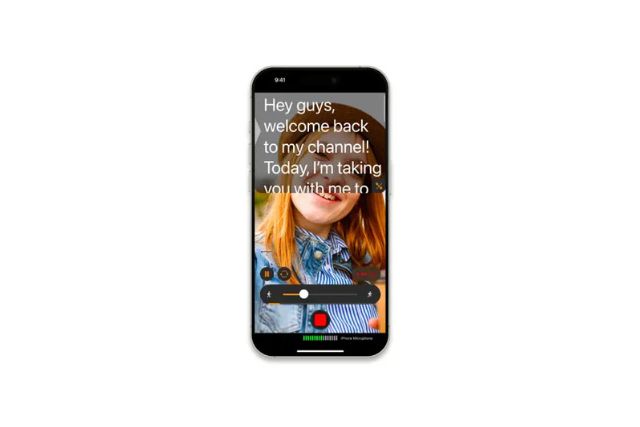



Maintaining steady eye contact during a video isn’t just about looking polished. It signals confidence and builds immediate trust with your audience. Viewers can quickly tell when someone avoids the lens, and that subtle disconnect is often enough to weaken your message.
Video has become a primary tool for business communication, training, marketing, and education. Knowing how to maintain eye contact in videos helps you hold attention, appear more credible, and connect with viewers on a personal level. This article unpacks the habits, tools, and techniques professionals use to project confidence, authenticity, and clarity, right through
Viewers instinctively equate eye contact with sincerity. According to research, faces that look directly at the observer are rated as more trustworthy and likable than those that avert their gaze. In video content, this principle still applies, even though there's a lens separating the speaker from the audience.
When you look directly into the camera, it feels like you're speaking one-on-one. This creates a sense of intimacy, even in group settings like webinars or virtual classrooms. Strong eye contact also reduces cognitive load for your audience, helping them process your message more effectively.
In real conversations, we don’t stare off to the side or check our reflection every few seconds. On video, these habits are interpreted as signs of distraction or nervousness. Eye contact helps replicate the feeling of a live exchange, reinforcing authority and professionalism while encouraging viewer trust.
Before mastering how to maintain eye contact in videos, it’s important to recognize common habits that break it:
Most video platforms default to a “self-view” mode. While it’s tempting to check your expression or framing, constantly glancing at yourself breaks the illusion of direct communication. Instead of connecting with your audience, you’re watching yourself perform.
Tip: Hide the self-view window or minimize it. Many platforms like Zoom and Teams now allow users to turn this off.
When your eyes dart offscreen to read a script, your viewers notice. It makes your delivery feel rehearsed and impersonal, especially if it happens repeatedly. This issue is widespread among virtual presenters, YouTubers, and even politicians during press briefings.
Solution: Use tools like teleprompter apps that position your text close to or directly over the camera lens.

Using a teleprompter app is one of the most effective ways to maintain steady eye contact while delivering scripted content. These tools display your script near or directly over your camera lens, allowing you to read naturally while appearing to look straight at your audience.
Teleprompter.com offers a streamlined solution that works across web, iOS, and Android. You can adjust scroll speed, font size, and placement to match your pace and delivery style. For a smoother, hands-free experience, try using auto (voice) scrolling, it automatically scrolls your script as you speak, helping you maintain steady eye contact without manual control. By aligning your script with the lens, the app helps you stay focused, confident, and visually connected throughout your video.
You can sign up for free at Teleprompter.com and explore the full feature set with a free trial, ideal for professionals looking to improve their on-camera presence.
Placing your camera below your eye line makes it appear as though you're looking down, while a camera positioned too high can give off an unnatural angle. For optimal results:
Creators who record while moving, like vloggers or educators, benefit from DockKit-supported gimbals such as the Insta360 Flow Pro. These tools track your movement and stabilize the shot while keeping your gaze aligned with the camera. The technology ensures your face stays centered even as you shift position, which helps maintain a consistent visual connection throughout the recording.
For a closer look at how this integration works with teleprompter apps, explore this introduction to DockKit support for gimbals.

Many media trainers suggest placing a small mirror behind your lens. Seeing your own eyes looking back at you simulates audience feedback, which helps reduce stiffness and awkward blinking. This technique is especially useful for speakers who find it hard to maintain a natural gaze during long recordings.
Use mock presentations to self-analyze your gaze consistency:
Over time, you’ll develop muscle memory that makes camera-focused delivery second nature.
Maintaining eye contact 100% of the time can come off as robotic. Instead, aim to look into the lens around 80% of the time. Use the remaining 20% to glance away naturally, such as when emphasizing a point, pausing to think, or transitioning topics.
Maintaining eye contact is a key part of engaging delivery, but it works best when supported by other non-verbal cues and environmental factors. These additional tips help ensure your on-camera presence feels confident, approachable, and human.
A steady gaze can build trust, but a neutral or stern expression may unintentionally come off as cold or flat. A genuine smile, especially at natural breaks or transitions, softens your tone and makes your message more relatable. Smiling also has a physiological effect, it relaxes facial muscles and helps your voice sound more upbeat and confident.
Over-focusing on maintaining eye contact can backfire. Viewers can sense when a speaker is overly rehearsed or tense, which creates a barrier instead of a connection. The goal is consistency, not perfection.
Poor lighting can obscure your eyes, even if you're maintaining perfect gaze alignment. Your eyes are one of your most expressive tools on video, and lighting plays a direct role in how clearly they’re seen.
When your eyes are well-lit, viewers can more easily interpret emotion, intent, and c
Making consistent eye contact in your videos isn’t just about looking polished, it’s about building trust, holding attention, and delivering a message that feels authentic. From positioning your camera at eye level to using tools like teleprompters and gimbals, the right techniques can help you maintain clear, direct engagement with your audience.
If you're serious about improving your video communication, take time to adjust your setup and build habits that support visual connection. Start small: hide your self-view, lift your webcam, or try a teleprompter app. Small tweaks add up to lasting viewer impact.
Use a teleprompter app that displays the script near your camera lens. This allows you to read while maintaining a direct gaze.
It’s usually due to habit or nerves. Placing a visual cue (like a sticker or mirror) near your lens can help retrain your focus.
Yes. Research shows direct gaze increases viewer trust, engagement, and message retention, especially in professional communication.



